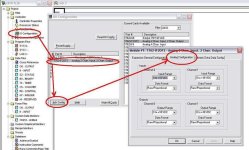Config an analog card
- Thread starter rojay
- Start date
Similar Topics
I might be missing something simple here but we've set some scaling up on our analogue input cards (4-20mA ranged HighEngineering = 100...
All, I need some assistance ASAP.
I am not sure how to configure IV3+ analog input for 0-10 vdc. Is there a jumper or something that I need to...
Hi,
thanks to all those who replied me.
Please direct me to the correct way to getting some temperature reading on HMI.
i'm using 1769 PLC and...
i'd like to simulate reading analog on plcSim for ex: channel PIW304, so is there anything i need to config on hardware on Step7 ? hope for...
Hey fellas,
I've got some Point I/O analog inputs (1734-IE8C) that I would like to filter. FYI, this is for some flow meters. The raw...



